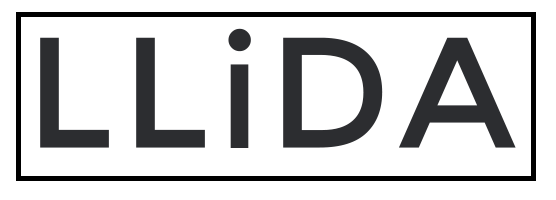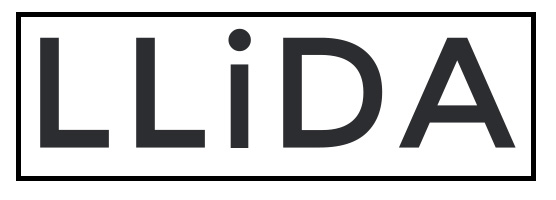‘bloggeriffic’
http://int1bloggers.blogspot.com/
Type of snapshot
Provision in the curriculum: skills/literacies addressed in topic module
What was the context for this snapshot?
This project involves Intermediate 1 students studying on a generic care and early education course.
The unit they are working on is all about working in early education and childcare. This unit didn’t engage or enthuse the students and I decided to teach this unit through the use of a blog and other web 2.0 tools to enhance their learning experience. I, also, wanted to have a collaborative element within their blogs as the emphasis within this unit is communication, teamwork and employability. To implement this into their blogs each working group designed a blidget for each group member to put in their blog. This meant they could comment on each others work, communicate and the skill/literacies they gained through using technologies will enhance their employability and self confidence.
I wanted the project to empower and personalise students learning and boost their self esteem by being proud of what they have achieved.
What kind of learners were involved in accessing this provision or support?
The Intermediate one students have many challenges from specific support needs (whether emotional, personal or intellectual) and various behavioural issues. I wanted this project to capture their creativity as well as personalising their learning.
What skills or literacies were particularly being addressed?
I wanted to capture the imagination by enthusing and engaging my learners from the outset of this unit. I built upon the technology skills they already had and introduced one new skill per week. Initially we discussed blogs and what they were. We created a blog and straight away I sparked their creativity by encouraging them to personalise their blog with their own designs. I introduced the students to making and editing posts on their blog, this included web links, pictures, videos, widgets, blidgets and most recently embedding bubbl.us mind mapping technology into their blog which they designed within their groups when doing a group investigation. We used their blog as a discussion point for case studies where student could comment on the case study questions posted by the student. Therefore they are using digital technologies as a communication tool, they are peer evaluating each others work and using their blog to create information.
For the collaborative learning each student made a blidget of each of their group members blog and posted this on their own personal blog. I created a blog of the weekly work of the students and I made Blidgets of all my students blogs so I could comment on their blogs, keep up to date with their progress and I used it as a formative assessment tool.
The students are continuing to build up their knowledge and skills which will enhance their ability to perform tasks effectively in a digital environment.. They are beginning to produce digital material that they can effectively read and interpret. They have been successfully manipulating data and images to reproduce these within the digital environment that is their blog..
This embeds their core IT skills into a working situation. The use of a variety of web 2.0 technologies within their digital environment will increase their awareness of the variety of formats and digital resources available which will in turn increase their understanding and usage of these technologies in their college and working life. These will empower the students to take control of their own learning.
Many of these skill and literacies are new to the students but they have been enthusiastic and engaged throughout the project so far. This has greatly increased their knowledge and skills which will be further built upon as the unit progresses
Who provided the support? How was support provided?
This project was introduced and managed by myself as both the lecturer for the unit and as my role of Learning, teaching and quality advisor within the college. I had support from my ILSS colleagues and the learner assistant.
Benefits, outcomes, and lessons learned
The use of technologies and web 2.0 tools has engaged, enthused and motivated the students. Attendance and behaviour has much improved as has the students confidence and self esteem.
Some quotes from the students when asked how using technologies enhanced their learning:
- Easier to find out information and post it straight into your blog
- Enjoying posting information on my blog and discussing information found.
- Like having my groups blidgets on my blog
- Less paper, can’t lose it and takes less time to do
- No writing
- Better than just looking up information, printing it off then write about it and talk about it…..blogging is better
- Enjoy creating my blog
- Love the colours and it’s fun
Some quotes from students when asked how they felt these tools had helped them to be in control of their learning:
- Can put own personal touch on blog
- Makes you more creative
- Colours are more stimulating
- More interesting and less boring than other classes
- I like Working on it from home
The students feel much more empowered in their learning and they have gained in confidence which has let their creativity flow. The use of colours, pictures and videos has stimulated their learning and the collaborative blidgets has kept them in touch with peers and up to date with information. The project so far has achieved everything I’d hoped for and has made a rather inactive course very interactive. The tools used will enhance their employability skills and those who needed extra support have excelled by the use of blogs.
I have learned that building on their experiences of facebook and bebo has really captured the students attention and increased their own confidence. None of the students had used a blog before but by tapping into previous experience they adopted new skills with ease. They have gone from strength to strength and are now eager to get to work on their blog tasks as soon as they enter the classroom. I know they will engage enthusiastically with Voice thread and the flip camera. A future focus group near the end of the unit will give me further insight into the groups thoughts about this way of learning.
I have enjoyed the ‘blog within a blog’ as I can easily monitor the groups activity and comment on their work without a paper chase. I have, also, found that these younger students have taken a pride in their blog in a way they haven’t done with any paper based materials.
My next step is to use the flip camera to capture their thoughts about various aspects within the course and this can be posted on their blog for discussion. This will include a ‘big brother’ type diary room where students will get asked questions about employability within the early years and comment on the skills they have for this post. I want to introduce voicethread to the students where they will design a voicethread about a related childcare provision and ask other students in the class to comment on it.


